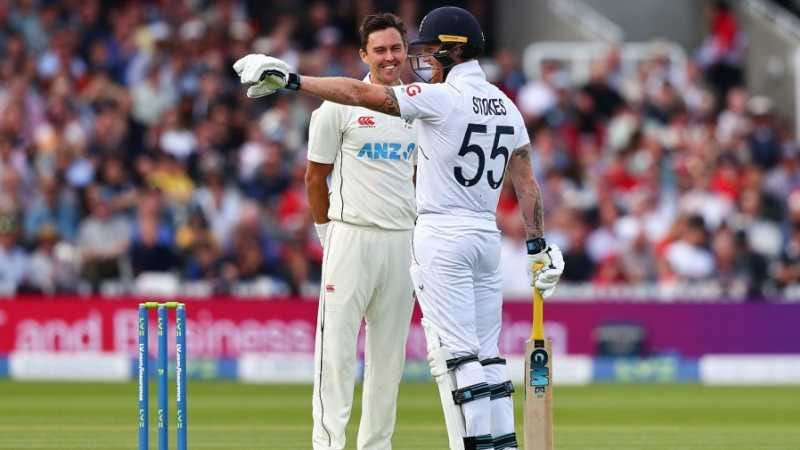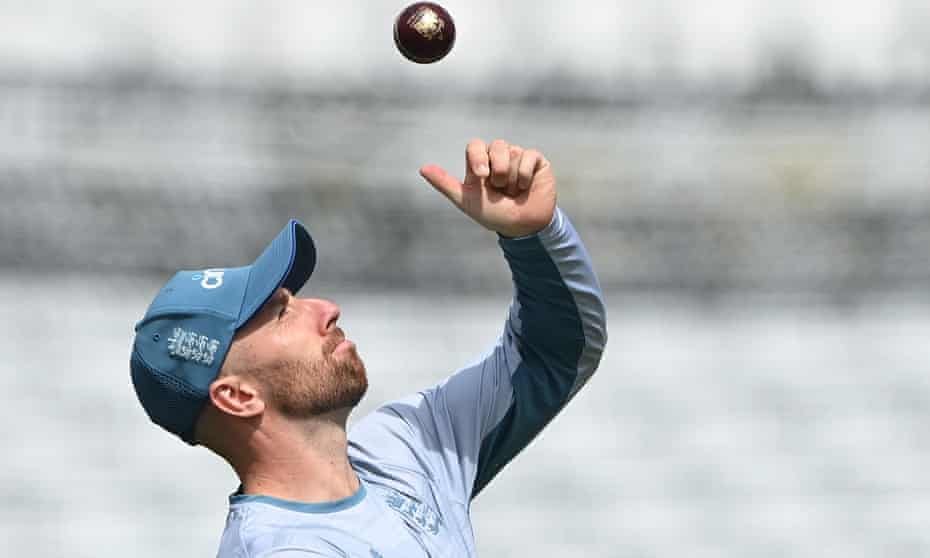I became a little distracted in my second test review - apologies. So, here are some words from the ‘cutting-room-floor’
Quickly, in my defence - I recently listened to a podcast, one of too many! - it was (The Rest Is History) - specifically an episode on the origins of Robin Hood. This predictably had me connecting the Nottinghamshire legend with Trent Bridge, and then, the second test between England and New Zealand. A long bow to draw? I know, pardon the pun!
An even longer bow was dressing Jonny Bairstow in the legend’s green, likening his blistering fourth innings century to the ‘rob from the rich, and give to the poor’ fable?
And some back-story on The Rest Is History podcast.
There is a cricket connection there, with one of the hosts, Tom Holland, seemingly being a life-long cricket tragic. In fact, his Twitter account describes himself as a 'leading English cricketer' - I find his co-host, Dominic Sandbrook, suitably more grounded. Joking aside, they do a great job together - it is well worth a listen. Historian, or not.
Back to the cutting-room-floor …
Jonny Bairstow - what an incredible innings to finish an extraordinary Test match. Bairstow entered the fray at 3-56 (Joe Root departing) - not the best good-bye, and a pretty bleak look forward. Alex Lees, the not-out batsman, was going along OK, but for how long? In one sentence: I think Lees will always be challenged by bowlers at this level. 3-56 became 4-93 with Lees caught Blundell, bowled Southee.
At this moment, England realistically had two, maybe three, partnerships to make the 200-odd needed for victory. Ben Stokes would be the best of allies. Ben Foakes could be relied on, the back four, considerably less so. And then there is Bairstow’s form to consider. A quiet first test at Lords; missing out in a run-laden first innings here. He had 25 runs total from three hits, having his timbers rattled twice, and undone on the inside edge by Trent Boult. Not the best launching pad! That being said, there were signs in the second innings at Lords that Bairstow was looking to aggression, over caution. He visibly ‘picked a fight’ with Kyle Jamieson - he didn’t win; still, there were encouraging signs, and a master batter at the other end, to complete the job.
Which leads me into an email I received from a reader, which I wanted to share with you. Part of it is here:
‘Stokes and Bairstow seem to bat best when they have a target, or deeper than that, a real purpose (I’d love to see some of their 1st innings and 2nd innings statistics across their career)’
Not knowing the stats Shane was referring to, I replied, agreeing that both players seemed to have similar batting DNA. They prefer a situation where they have a problem to solve, rather than a blank canvas to create from. So working backwards, opposed to forwards. Another way to think of it is that they might both enjoy uncertainty, over predictability.
Here are the numbers. Bairstow first, then Stokes.
Both averaging less in their second innings; Bairstow considerably less.
An obvious variable here for all Test match batters is that holistically you would expect pitch conditions to deteriorate over the course of the game. Additionally, there will be fourth innings where the victory target is small.
Here are Joe Root’s numbers for comparison. And then, Michael Hussey, who sort of played a similar role to Bairstow in Australia’s middle order. Hussey’s numbers are exceptional.
As they say: “You can prove anything by statistics except the truth”
Circling back; what Bairstow and Stokes did was phenomenal, no question. They might have had many factors helping them, as discussed; what would be interesting to know though. Was there a conversation on ‘how do we do this,' or was it just organic momentum that built from a low base to a defining crescendo. It’s best they know, and, them alone.
The stats can remain to contradict us.
Tom Blundell and Ben Foakes: both wicket-keepers, have been brilliant - absolutely brilliant. And, brilliant in their own inconspicuous manner.
Little fuss has been shown by either, their skill-levels have been consistently high. The Dukes balls are a challenging proposition for wicket-keepers, especially ‘post-bat’ movement - both horizontally and vertically.
Blundell and Foakes have been almost error free with the gloves.
In Baseball - Catchers (Wicket-keepers) are judged in two broad stat categories, this is defensively - not hitting (batting)
SRAA - (Swipe rate above average) in plain - this means stopping batters stealing bases, so throwing to second, and third base affecting outs (run-outs)
EPAA - (Errant Pitches Above Average) simply - meaning blocking errant pitches, keeping the batter from getting to first base, and stopping on-base batters advancing.
I realise it’s likely there is some baseball fans reading, please forgive my brevity here.
My point being: there is no discernible defensive statistic for wicket keepers other than catches caught. If we borrow some ‘baseball speak’ - there is no real measure of their defensive importance. Instead, it is left to a totally subjective point of view.
Blundell has nine catches and a stumping. Foakes 11 catches.
Offensively! Their batting numbers are:
Blundell - 240 runs at 60.0 avg. with a SR of 49.18 (Against his career avg. is 37.46)
Foakes - 107 runs at 53.50 avg. with a SR of 45.92
Agreed - both have been extremely valuable contributors to their respective teams.
Their batting has been productive, with runs coming at vital stages of games, and from individually unique methods, and techniques. Both value the importance of ‘partnership-batting.’ A neglected value in my opinion.
PS. An interesting note: Foakes and Blundell were club teammates back in 2012-13, playing for Colchester East Essex.
Another point of discussion from the email was the minimal impact of spin.
I’m not sure where to go with this?
Ajaz Patel was given very little game-time in the first test. Firstly, by the conservative, anti-spin captaincy of Kane Richardson. And, secondly, after being put to the sword immediately by Ben Stokes. Patel was given no time to settle.
On the flip-side - with Jack Leach being subbed out of the first test, and his replacement, Matt Parkinson looking every bit like the rookie he still is. England also had very little to offer in the spin department.
On to Trent Bridge and New Zealand chose no spin for the second test, where as, England went back to the predictability of Jack Leach.
I only see a slow bowler in Leach. I wish I could see a spin bowler, alas, it just doesn’t seem to be.
As a slow bowler, Leach relies solely on pace changes and line variation. His line variation is limited; to right-handers, he predominately challenges the front pad. Proficient batters, and set batters, will not, and should not, miss straight balls with no drop.
I would ask him to periodically use a wider line to right-handers, invite drives with batters hands away from their front-foot step. There is also the chance of clipping some Trent Boult foot-marks from this line.
It seems England have a penchant for slow-left-armers (SLA) - Leach is 24 games in, and maybe England are bound to invest further in him. The numbers are not terrible.
82 wickets at 33.47. Economy is a shade under 3 RPO. It will be interesting to watch his work in the one-off test against India later in the summer.
If it doesn’t play out for Jack Leach, I see a career in the garden beckoning. A BBC gardening host might be a nice fit for the personable Somerset native. Just saying!
Finally, I came across this tweet from WisdenCricket twitter account. Enjoy the replies. I listed my five favourites below, in no particular order.
“Describe that Test match in three words”
Better than football - credit: @AlexTaylo2
New Zealand Bairstoked - credit: @Fine_nevermind
JESUS. H. CHRIST - credit @AllGoodChap
Without swearing, impossible - credit @StephenGibert
Lost for words - credit @AFCMet
As always, thank you for being here. And I hope you enjoyed the read. If you liked what you read, I am always open to a coffee. You can buy me one here!
















